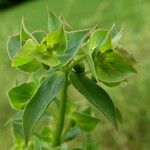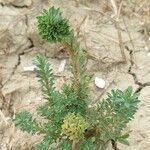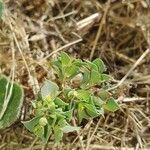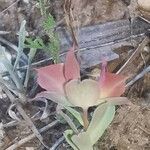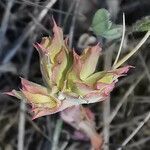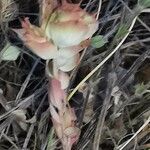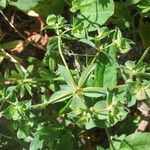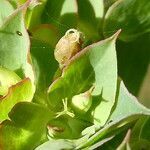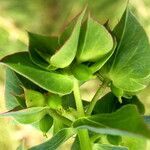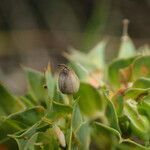Herbs, annual, with taproot. Stems erect, unbranched or branched, 5–20 cm, glabrous. Leaves: petiole absent; blade obovate, linear-oblong, or spatulate, 2–20 × 2–10 mm, base cuneate or attenuate, margins entire, apex acute, obtuse, emarginate, or mucronate, surfaces glabrous; venation usually inconspicuous, sometimes 3-nerved from base, midvein prominent. Cyathial arrangement: terminal pleiochasial branches 2–5, each 2–6 times 2-branched; pleiochasial bracts similar in shape to but usually shorter and wider than distal leaves; dichasial bracts distinct, widely ovate, rhombic, or suborbiculate, imbricate, base cordate, truncate or cuneate, margins finely denticulate, apex acute or obtuse, strongly mucronate; axillary cymose branches 0–10. Cyathia: peduncle 0–2 mm. Involucre cupulate, 0.5–1.2 × 0.6–1.3 mm, glabrous; glands 4, elliptic to orbiculate, 0.2–0.3 × 0.3–0.8 mm; horns usually absent, occasionally divergent, 0.5–1.2 mm. Staminate flowers 6–10. Pistillate flowers: ovary pilose only at base, styles 0.9–1.1 mm, 2-fid. Capsules subovoid, 2–3 × 1.8–3 mm, slightly lobed; cocci rounded, smooth, glabrous or slightly pilose along abaxial region; columella 1.1–1.8 mm. Seeds grayish, whitish, or light brownish, ovoid, 1.2–1.8 × 0.7–1.1 mm, transversally sulcate; caruncle subglobose to subconic, 0.2–0.5 × 0.2–0.5 mm.
More
Annual, 1–4 dm, usually with numerous alternate branches; cauline lvs oblanceolate, 1–2 cm, acute, caducous; lvs subtending the umbel similar; lvs of the umbel round-ovate or reniform, 5–10 mm, conspicuously mucronate; rays of the umbel commonly 3, each repeatedly dichotomous; seeds brown beneath a gray coating, deeply sculptured on both sides with several transverse furrows; 2n=16. Native of the Mediterranean region, becoming established in waste places and along roads from Pa. and O. to Va. and W.Va. July–Sept. (Tithymalus f.)
